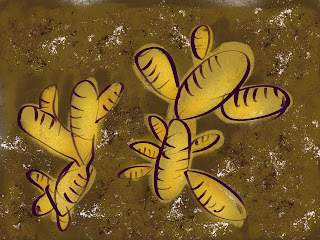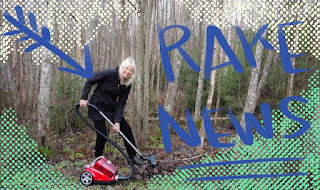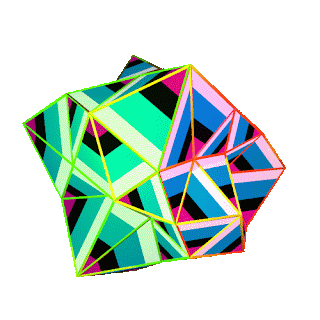 |
| RHIZOMATIC! |
1. What do you think about the focus of the paper?
How does it relate to this course?
"the transformation of art education from an exclusive interest in fine art to embrace the much broader concept of visual culture"
This paper illustrates the ever growing and developing nature of art and visual culture as well as their overlap and dichotomy.
The incorporation of popular culture images into the narrative and scope of art and its history is imperative to making meaningful and lasting connections with K-12 students.
The art classroom must include and understanding of and engagement with the greater universe of visual culture.
2. Do you agree with Duncum when he states: " The structure of visual culture and a visual culture curriculum is rhizomatic."
"visual culture operates as a rhizome."
Umm yes! This is a magnificent and apt metaphor. Especially within the context of a comparison with trees and treelike structures. The tricky reality about rhizomes is that they cannot be contained and may rot or be susceptible to disease and insect invasion if they are not properly tended to.
3. What do you think of Duncum's sampling of projects?
Would these be project you would use in your art classroom?
Why or why not?
The electronic rhizomatic site project piques my interest. I wonder whether using Prezi instead of PowerPoint would be an effective way to get the visual point across because Prezi has a more rhizomatic/less linear format for slide presentation.
4. This site contains much information and many links to external sources (video, web, etc).
What information do you find valuable on this site, as a visual consumer and as an art educator?
SO MUCH GOODNESS 10/10 RECOMMEND.
Although some of the links were not working properly there is a PREPONDERANCE of good and useful resources here.
I spent some time clicking through various catchy titles like “ESCAPE” and “CRAAP” to find an abundance of ideas and rubrics for spotting good, and weeding out fake, news/information.
+ + + THIS WEBSITE:
https://frankwbaker.com/mlc/fake-news-recommendations/ + + +
5. Of all the linked lesson plans and video content, select one (note it/hyperlink in your post) and describe how you would use it in your classroom.
This reverse image search video is interesting, exciting and offers unlimited possibility for classroom engagement.
One caution in utilizing this in school would be the very massive and likely possibility that something would go awry.
For example, if students chose their own images that could get off track quickly as well as links being outdated or broken.
This lesson would require the teacher to be waaaaay overprepared and have “step outs” as well as many more examples than necessary. At any rate this would be a useful tool for students to have mastery of that could help them in weeding out false information as well as have easy access to information.
6. How could you use the content of this media literacy primer for a lesson/unit in your classroom?
Be sure to mention the specific content that you could use from the primer, what age group the lesson is geared toward, and materials you would use for the lesson.
Ok, ok. I think I’d like to do something with cereal boxes. Have students bring in some from home and collect a bunch myself. Let’s explore the ways that the colors/designs/copy/characters are enticing children and ways that they are shifting or stretching the truth to give a false sense of benefit. We can explore them for their trickery, successful advertising/allure and even health benefits (comparatively/absolutely).
I think this would work best with 5th-7th graders who would still be open to cereal imaginations but will likely be ready to hear and accept that/how they’re kind of actually being played by the marketers and/or advertising directors.





Comments
Post a Comment